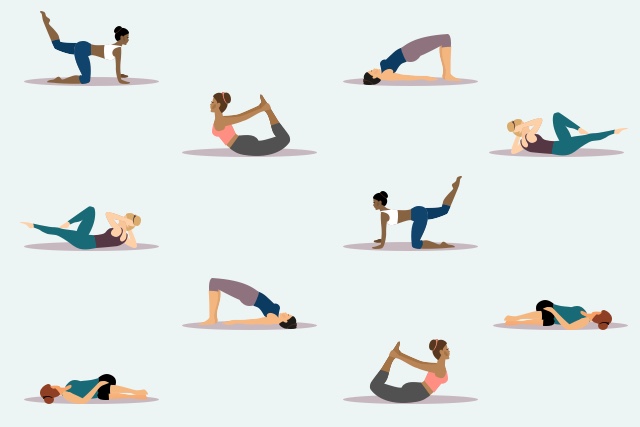You may not know, but your and digestive health has one thing in common; they both depend on the strength of your pelvic floor muscles. Whether you are relieving yourself, having, or performing any lower-abdomen-related activity, you use your pelvic muscles; therefore, they are crucial to your overall health.
Any problem with these muscles can affect your organs, like the rectum, bladder, and genitals, leading to conditions like urinary incontinence. The best way to treat pelvic muscle problems is by doing pelvic floor exercises to strengthen these muscles.
Let’s define pelvic floor exercise.
What is pelvic floor exercise?
Pelvic floor exercise is an exercise you do to strengthen your pelvic floor muscles. The primary purpose of strengthening these muscles is to prevent urine leakage. Still, it also serves other purposes like preventing accidental passing of poops or gasses and improving body organs related to pelvic muscles.
It is important to keep your pelvic muscles fit and strong; otherwise, you may end with pelvic organ prolapse if you are a woman. You might wonder what pelvic organ prolapse is; read on to know what it is and its causes.
What is pelvic organ prolapse?
You can undergo pelvic organ prolapse when your urine or stool leaks out, leading to urinary and fecal incontinence. You can also experience this condition when you lose your ensitivity.
What causes pelvic organ prolapse?
Pelvic organ prolapse occurs in women and can result from conditions that weaken the pelvic muscles’ floor. These conditions may include:
- Age. Your pelvic floor muscles will naturally weaken with your age.
- Pregnancy
- Exercises like jumping or heavy weight lifting
- Frequent coughing, sneezing, or laughing.
- Genetics
- Overweight
Why should I do pelvic floor exercises?
If you are a woman experiencing pelvic floor prolapse, you should do this exercise because it will help resolve issues like painful intercourse and urinary or fecal incontinence. Even if you don’t experience these conditions, you should still exercise the pelvic floor as it helps your overall health.
Where are the pelvic floor muscles located?
Pelvic floor muscles are found at the base of your pelvis between your pubic bone and the tailbone.
Types of pelvic floor exercises
The core role of pelvic floor muscles is to help control the bladder, uterus, and bowel and also improve strength though you should be aware of the common STDs if you’ve been practicing this exercise and you find yourself liking a lot.
Sometimes, you might find your muscles weakened by age, childbirth, obesity, or other conditions, and you might want to go for pelvic floor exercises to restore their strength. Some of the exercises you should consider are:
Kegels
Kegel is the most common type of pelvic floor exercise, which you can do by contracting and relaxing your pelvic floor. To do this exercise, you should do the following:
- Comfortably position yourself by either standing or sitting.
- Identify your pelvic floor with a lift and squeeze motion but breathe normally during this process. This will contract your muscles.
- Hold the lift and squeeze motion for about 5 seconds, then release it.
- Relax your muscles for 5 seconds, then repeat the process.
Bridge
The primary purpose of bridge exercise is buttock strengthening, which also helps pelvic floor muscles. To perform bridge exercise,
- Lie down flat on the floor, bending your knees to 90 degrees. Your feet and arms should also be flat on the ground with your palms facing down.
- While pushing your heels, squeeze your glutes, hamstrings, and pelvic floor, thus raising your hips off the ground.
- Pause in that position for a few seconds, then slowly return it to its original position.
- Perform this exercise at least three times daily, doing ten sets each.
Squats
Squatting is an exercise to strengthen quads and hamstrings but can also help strengthen pelvic floor muscles.
Stand upright while your feet are wide open but in line with your shoulder to perform a squat. Go down by bending your knees as if you want to sit on a chair and then push yourself up again. Repeat this down and up movement while in the same position doing ten sets at least three times daily.
Benefits of pelvic floor exercise
Pelvic floor exercise aims at strengthening pelvic floor muscles, which helps in many ways like:
- Increase pleasure during. Pelvic floor exercises like Kegels increase blood flow to the pelvic thus increasing the sensation and lubrication of the vagina and penis, which increases pleasure during. With the increased pleasure, you should be aware of bloodborne pathogens that may cause STDs and don’t engage in careless activities.
In the same breadth, pelvic exercise reduces pain during because of enough lubrication of the vagina and penis.
- Help prevent pelvic floor prolapse.
- Ease child birthing process. Besides strengthening the muscles, pelvic floor exercise also helps improve the flexibility of the back and prevent back pain. It, therefore, helps ease backache and labor during pregnancy and delivery.
- Ease the passing of urine and feces through the body
- Help treat urinary and fecal incontinence.
- It helps strengthen the support system for the baby during pregnancy.
- It helps in faster recovery after prostate surgery in men.
- Speed up the recovery after giving birth and gynecological surgery in women
- Boost your confidence and quality of life, especially regarding.
Doing pelvic floor exercises requires you to identify these muscles first. Some people can identify them faster while others might have problems, and in that case, you should consult with a continence professional.
This is because you will only do this exercise correctly if you’re strengthening the right muscles.
Conclusion
Pelvic floor exercise is very important for urinary and bowel movements and your overall health. Finding the right muscles for this exercise is the first step to strengthening your pelvic floor muscles; therefore, confirming how to identify these muscles is essential.
With strong pelvic muscles, you will treat your urinary and fecal incontinence and improve your prowess





